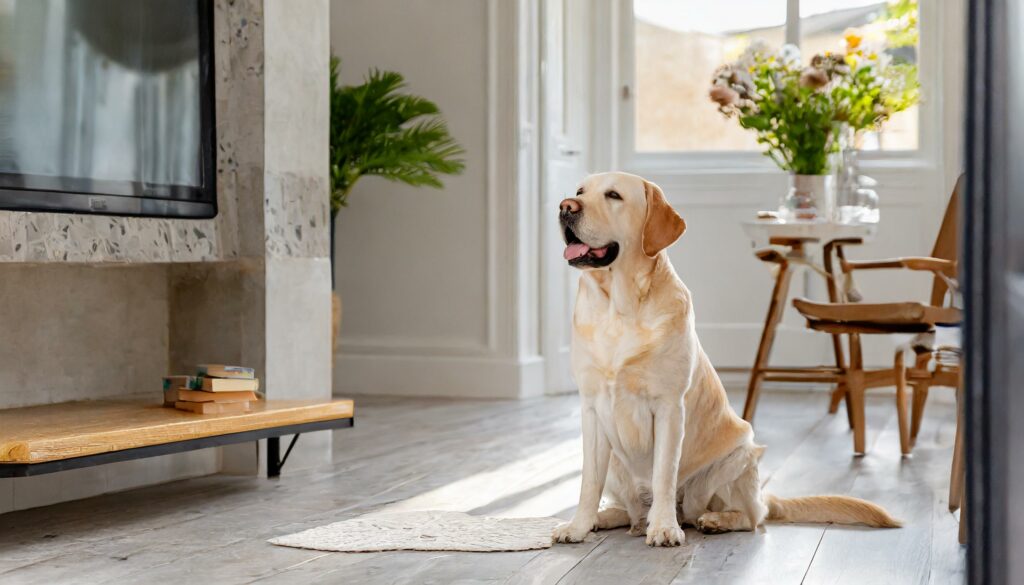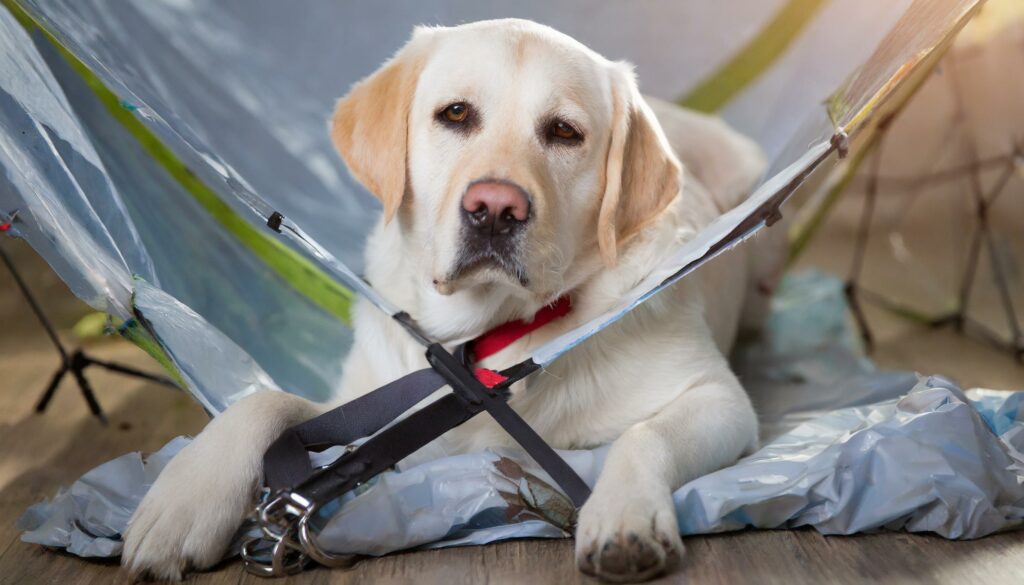Labradors are among the most popular breeds in the world, celebrated for their friendly demeanor and strong familial loyalty. These dogs are often chosen for their ability to integrate well into family life and adapt to a range of activities. However, their social nature means they have specific needs that must be considered before they are left alone. This comprehensive guide delves into the nuances of when and how you can leave a Labrador alone, emphasizing responsible pet ownership and the well-being of your furry friend.
Understanding Labradors
Labradors, or Labrador Retrievers, are widely recognized for their gentle and outgoing temperament. They are highly social creatures who develop strong bonds with their family members. Originally bred as hunting dogs, their main job was to retrieve game; this has instilled in them a high level of energy and a strong desire to work alongside humans. Understanding their background helps in appreciating why Labradors might struggle more than other breeds when left alone.

Age Considerations When Leaving a Labrador Alone
When planning to leave a Labrador alone, their age is a crucial factor to consider:
- Puppies: Labrador puppies are particularly vulnerable as they are in the crucial stages of development. Puppies under six months should not be left alone for more than two hours at a time. They require constant supervision and frequent bathroom breaks to help with house training.
- Adult Dogs: Adult Labradors are typically more accustomed to periods of solitude, but they still need interaction throughout the day. Leaving an adult Labrador alone for four to six hours is generally considered acceptable, provided they have been properly exercised beforehand.
- Senior Dogs: Older Labradors might require more frequent bathroom breaks and can experience heightened anxiety when left alone. It’s essential to assess their comfort and health needs as they age.
Duration of Leaving a Labrador Alone
The duration for which a Labrador can be left alone depends largely on their individual temperament and training. However, as a general rule, it is advised not to leave any Labrador alone for more than six hours. Prolonged periods of solitude can lead to anxiety, stress, and destructive behavior due to their social nature.
Preparation for Leaving Your Labrador Alone
Proper preparation can make the experience of staying alone easier for your Labrador:
- Physical Space: Ensure they have a comfortable, safe space to stay while you are away. This area should be secure and free from any hazards.
- Food and Water: Leave adequate fresh water and, if necessary, a measured amount of food.
- Safety Measures: Remove any items that your dog could chew or swallow inappropriately, ensuring their environment is as safe as possible.
Training Your Labrador to Be Alone

Training your Labrador to manage being alone is crucial:
- Gradual Conditioning: Start by leaving your Labrador alone for short periods and gradually increase the time as they show signs of being able to handle it.
- Crate Training: A crate can provide a safe haven for your dog if they are trained to see it as a positive space. Never use the crate as punishment.
- Behavioral Reinforcement: Use positive reinforcement to reward your dog for calm behavior when left alone.
Activities to Keep a Labrador Engaged
Keeping a Labrador engaged while alone is key to preventing anxiety:
- Toys and Puzzles: Provide toys that stimulate their minds and dispense treats to keep them busy.
- Music or TV: Background noise like a radio or television can provide comfort by mimicking the presence of people.
The Role of Exercise Before Leaving
Exercise is paramount for Labradors, particularly before they are left alone:
- Types of Exercise: A long walk, a game of fetch, or a run can help tire them out.
- Timing of Exercise: Exercise your Labrador before leaving them alone to help them relax and potentially sleep during your absence.
Signs of Separation Anxiety

It’s important to recognize the signs of separation anxiety:
- Symptoms: Destructive behavior, excessive barking, and attempts to escape are common signs.
- Managing Anxiety: Consultation with a veterinarian or a pet behaviorist may be necessary if signs persist.
When to Seek Professional Help
If behavioral issues become frequent or severe, seeking professional help from a behaviorist or vet is advisable. They can offer strategies and potentially medication to help manage your Labrador’s anxiety.
Technology Aids
Consider using technology to monitor and interact with your pet while you are away:
- Monitoring Systems: Cameras can help you watch your pet and ensure their safety.
- Interactive Cameras: Some cameras come with features that allow you to talk to your pet and dispense treats.
Alternative Solutions
If leaving your Labrador alone doesn’t work, consider alternatives:
- Dog Sitters: A reliable pet sitter can provide company and care for your dog in your absence.
- Doggy Daycare: A daycare facility offers a safe environment where your dog can interact with others and stay active.
Legal and Ethical Considerations
Being aware of the legal and ethical implications of pet care is essential. Make sure that you are providing a safe, healthy environment for your Labrador, as neglect can be both a legal and an ethical issue.
Owner Stories and Experiences
Many Labrador owners have navigated the challenge of leaving their pets alone. These stories can offer practical insights and reassurance that with the right preparation, it is possible to balance your Labrador’s well-being with your personal and professional obligations.
Conclusion
While Labradors can adapt to being alone for certain periods, their well-being depends heavily on the preparation and training provided by their owners. By understanding and addressing their physical and emotional needs, you can ensure that your Labrador remains happy and healthy even when you’re not around.
